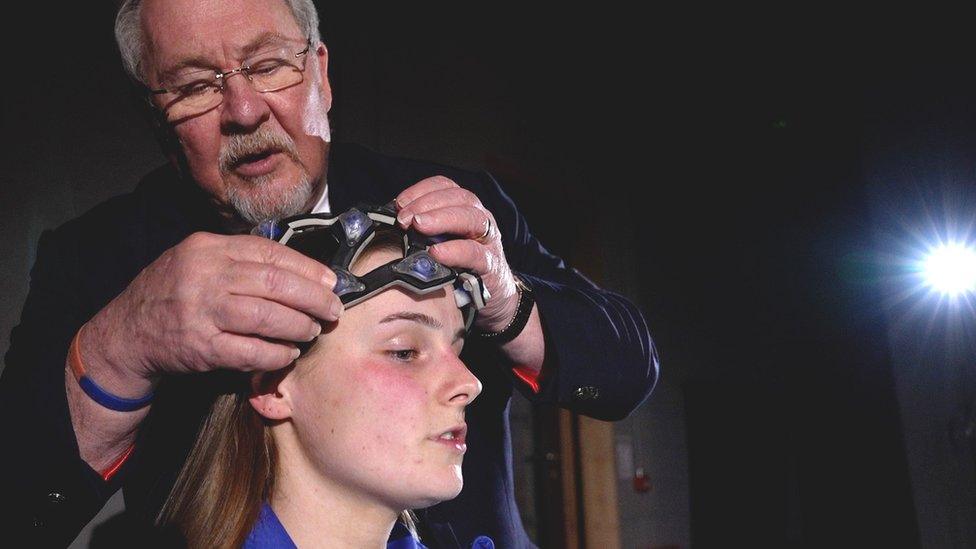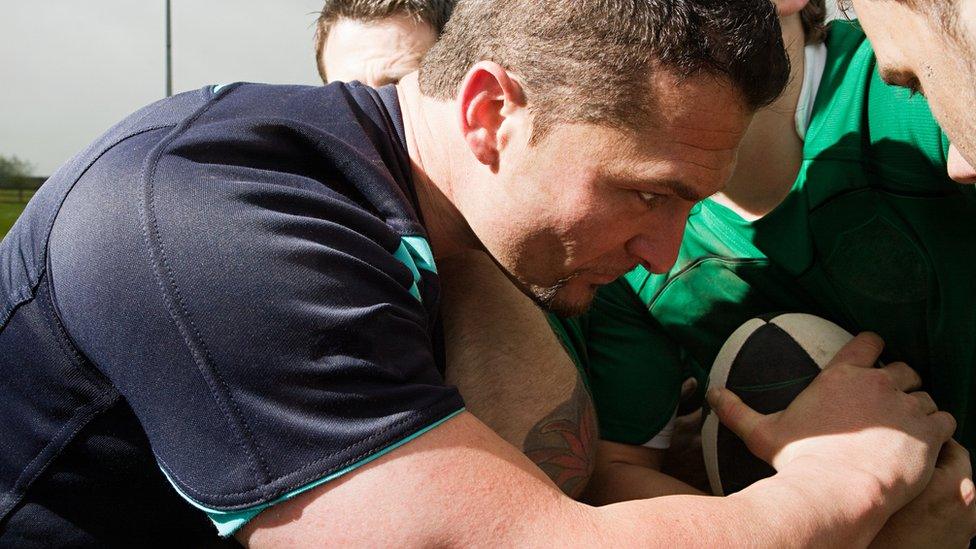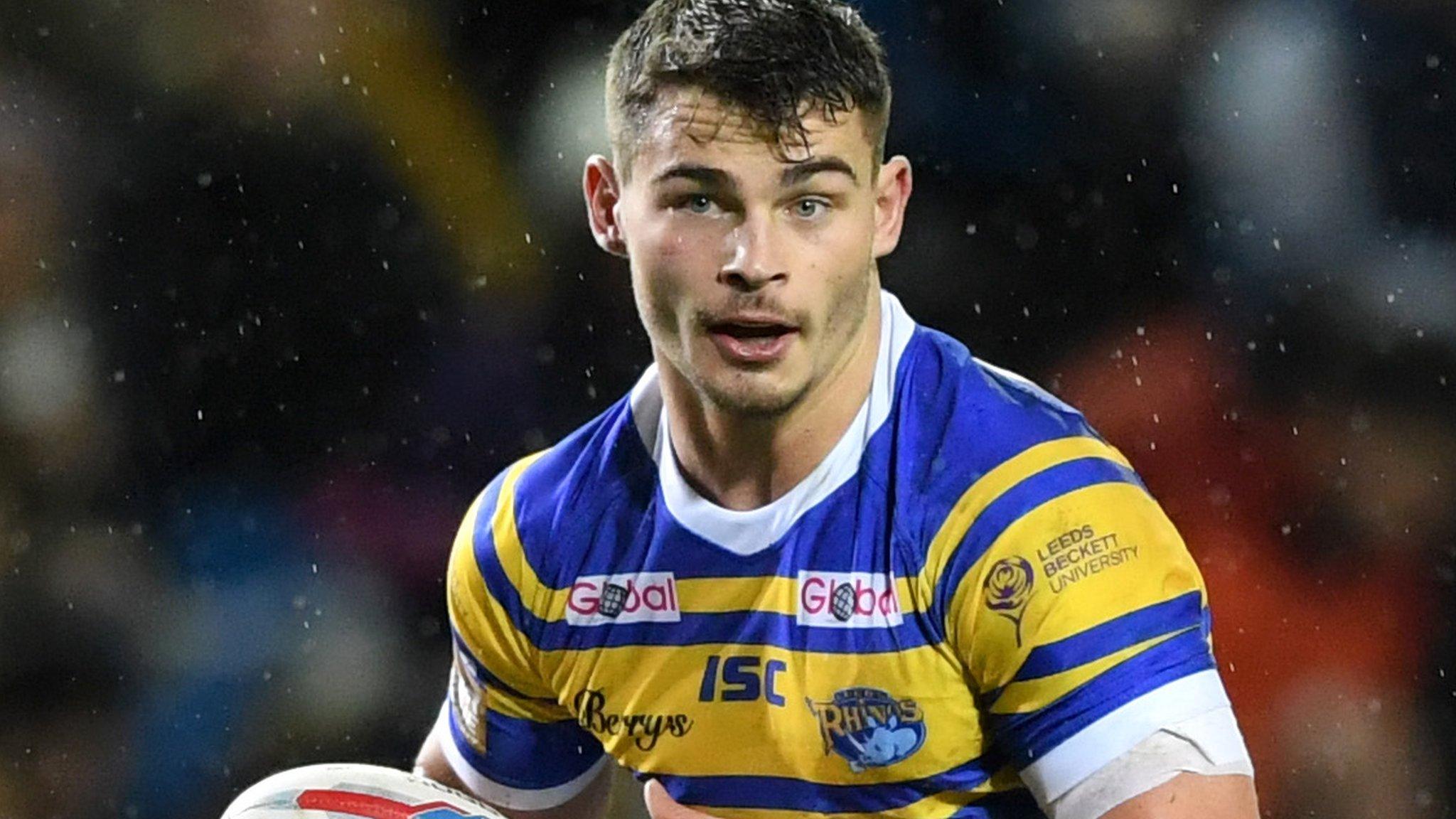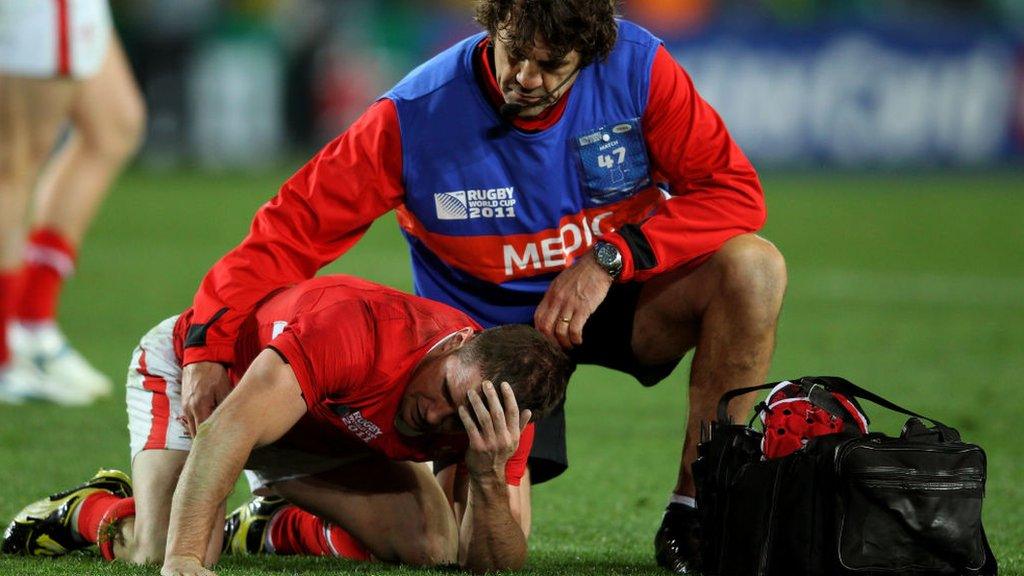Player brain scans aim to make sports safer
- Published

Jess Drage, a football player for Actonian Football Club, has tried out the device
Three rugby union clubs in England are to begin trialling scanning technology to monitor players' brain health.
Researchers hope a device which measures brain patterns could help medical personnel spot and manage concussion, and make sports safer.
The work is still in its infancy, but the idea is to get a baseline scan to use for comparison if an injury occurs.
It is one of a number of projects aimed at improving how contact sports deal with concussion risk.
The WAVi device involves a series of sensors being placed on the scalp to measure electrical activity, which produces a set of readings.
The theory is that a new scan after a suspected concussion might show how the brain has been affected and then guide decisions on when it is safe to start playing again. But the idea needs to be put to the test in experimental use with sports clubs.
East London Rugby Club, Cornish Pirates and Sevenoaks Rugby Club are the clubs taking part in the trial of the WAVi device, which is one of several being developed around the world.
The initiative is backed by not-for-profit organisation Love of the Game, whose president is former English rugby union player Simon Shaw. The organisation's chairman is Laurence Geller, the ministerial adviser appointed by government to examine concussion in sport.
Long-term risks
The government wants to drive forward research and improve concussion protocols to keep players - both elite and amateur - safe.
Their intention is to have standard UK-wide rules in place for all contact sports for men, women and children, to be published later this year. This would standardise procedures, including the length of recovery time for players with head injuries.
Pioneering concussion guidelines are already in place in Scotland, covering all sport - from grassroots to elite level.
There has been a growing debate about repetitive heading in football and the long-term risks to players' brain health.
Head injuries caused by collisions during play are also a concern.
The push for standardised protocols comes as research suggests the issue may be more acute for women than men. A study published in the journal JAMA Network Open in April 2021, external reported that the risk of sport-related concussion in adolescent girls playing football was nearly twice as higher as among adolescent boys.
Early onset dementia
Mr Geller says new guidelines are needed at every level of sport: "The speed [and] the strength of these players is increasing all of the time, and that can only lead to more injury unless we know how to deal with it.
"The teachers, the coaches, the referees at junior levels - everybody has to understand it - going down to the parents, doctors and the GPs."
Former England player Steve Thompson, part of the World Cup-winning team in 2003, has spearheaded the recent focus on concussion in rugby.
In interviews, Mr Thompson revealed he no longer remembers the 2003 victory because of his early onset dementia - caused, he believes, by head injuries in his playing career.
He is part of a group taking legal action against the rugby authorities.

Concussion among rugby players - and the potential damage to the brain - has been in the spotlight recently
Fellow World Cup colleague Ben Kay, along with other former players, has regular scans as part of the PREVENT study, led by the University of Edinburgh.
Funded by the Alzheimer's Society, the aim of the study is to chart developments over time in brain health.
Dr Richard Oakley, associate director of research at the Alzheimer's Society, said: "The potential link between playing professional sport and getting dementia is concerning for past, current and future players, and their families.
"The study offers real hope. Changes in the brain start 10-20 years before symptoms develop, so this study is crucial in finding early warning signs for dementia - enabling people to get the care and support they need."
Brain injury and concussion in sport is getting more attention, with a variety of research projects gathering momentum.
The key test will be whether the talk of new rules to improve player safety are turned into action.
Related topics
- Attribution
- Published22 July 2021

- Attribution
- Published31 August 2021
